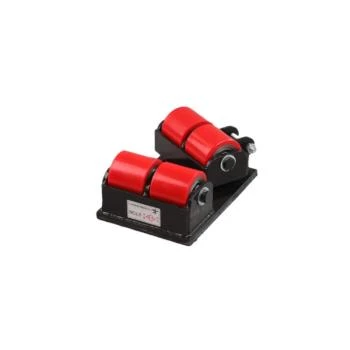moving heavy machinery
Moving Heavy Machinery Challenges and Best Practices
Moving heavy machinery is a complex task that requires careful planning, specialized equipment, and skilled personnel. Whether for construction projects, industrial relocations, or mining operations, the safe and efficient movement of heavy equipment such as excavators, bulldozers, and cranes is critical to the success of these activities. In this article, we will explore the challenges associated with moving heavy machinery and the best practices to ensure safe transportation.
Understanding the Challenges
Moving heavy machinery presents numerous challenges that can significantly impact the efficiency and safety of operations. Some of the primary challenges include
1. Weight and Size Heavy machinery can weigh several tons, requiring robust transportation solutions. Additionally, oversized machinery may not fit on standard roadways or bridges, necessitating special permits and routes.
2. Terrain and Accessibility The type of terrain can greatly influence the logistics of moving heavy equipment. Uneven surfaces, steep inclines, and soft ground can pose risks both during transportation and when machinery is being loaded and unloaded.
3. Regulatory Requirements Different jurisdictions have specific regulations regarding the transportation of heavy machinery. These may include weight limits, special signage, and escort requirements, which must be carefully adhered to in order to avoid fines or accidents.
4. Safety Risks The sheer weight and complexity of heavy machinery mean that any errors in movement can lead to serious accidents or injuries. Proper handling, secure loading, and awareness of surroundings are crucial.
5. Equipment Condition The condition of machinery being moved can impact the logistics and safety of transport. Equipment that is poorly maintained or has mechanical issues can pose additional risks during the move.
Best Practices for Moving Heavy Machinery
moving heavy machinery

To overcome these challenges, organizations must adopt best practices that prioritize safety and efficiency. Below are several best practices to consider
1. Planning and Coordination Comprehensive planning is vital to moving heavy equipment successfully. This includes route surveys to identify any potential obstacles, ensuring the route can accommodate the size and weight of the machinery, and coordinating with local authorities for necessary permits.
2. Use of Appropriate Transport Equipment Specialized transport vehicles, such as lowboy trailers and flatbed trucks, should be used to carry heavy machinery. These vehicles are designed for stability and weight distribution, minimizing the risks associated with transporting heavy loads.
3. Professional Operators Ensuring that operators are trained and experienced in handling heavy machinery is crucial. Professional operators not only understand the mechanics of the equipment but are also adept at managing or mitigating potential challenges that may arise during transport.
4. Safety Protocols Implementing strict safety protocols, including the use of safety gear, signaling devices, and communication tools, can significantly reduce the risks. Regular safety checks should be conducted before, during, and after the move.
5. Loading and Unloading Techniques Proper loading and unloading techniques are critical to prevent accidents. Using ramps or cranes to lift equipment onto transport vehicles should be done with extreme care to ensure stability and safety.
6. Clear Communication Effective communication among team members is essential. This includes clear signaling during loading, transport, and unloading phases to prevent misunderstandings and missteps.
7. Post-Move Inspection After transporting heavy machinery, conducting a thorough inspection of the equipment ensures it is in good working order and identifies any potential damage sustained during the move.
Conclusion
The movement of heavy machinery is both a logistical challenge and a safety concern that requires significant attention to detail. By understanding the challenges and implementing best practices, organizations can minimize risks and enhance the efficiency of transporting heavy equipment. With thorough planning, the right equipment, skilled personnel, and adherence to safety protocols, the process of moving heavy machinery can be conducted smoothly, ensuring that projects stay on track and within budget. As industries continue to evolve, prioritizing effective strategies for moving heavy machinery will remain an integral part of operations across various sectors.
-
Unlock Seamless Relocation with Our Heavy Equipment Moving ExpertiseNewsJun.06,2025
-
Unleash Unrivaled Flexibility with Our Adjustable Gantry CraneNewsJun.06,2025
-
Unleash Heavy-Duty Efficiency with Our Industrial Gantry Crane SolutionsNewsJun.06,2025
-
Revolutionize Steel Handling with Our Magnetic Lifter RangeNewsJun.06,2025
-
Master Equipment Mobility with Premium Machinery Mover SolutionsNewsJun.06,2025
-
Elevate Your Material Handling with Magnetic Lifter TechnologyNewsJun.06,2025
-
YS Permanent Lifting Magnets: The Smarter Way to Handle SteelNewsMay.22,2025
